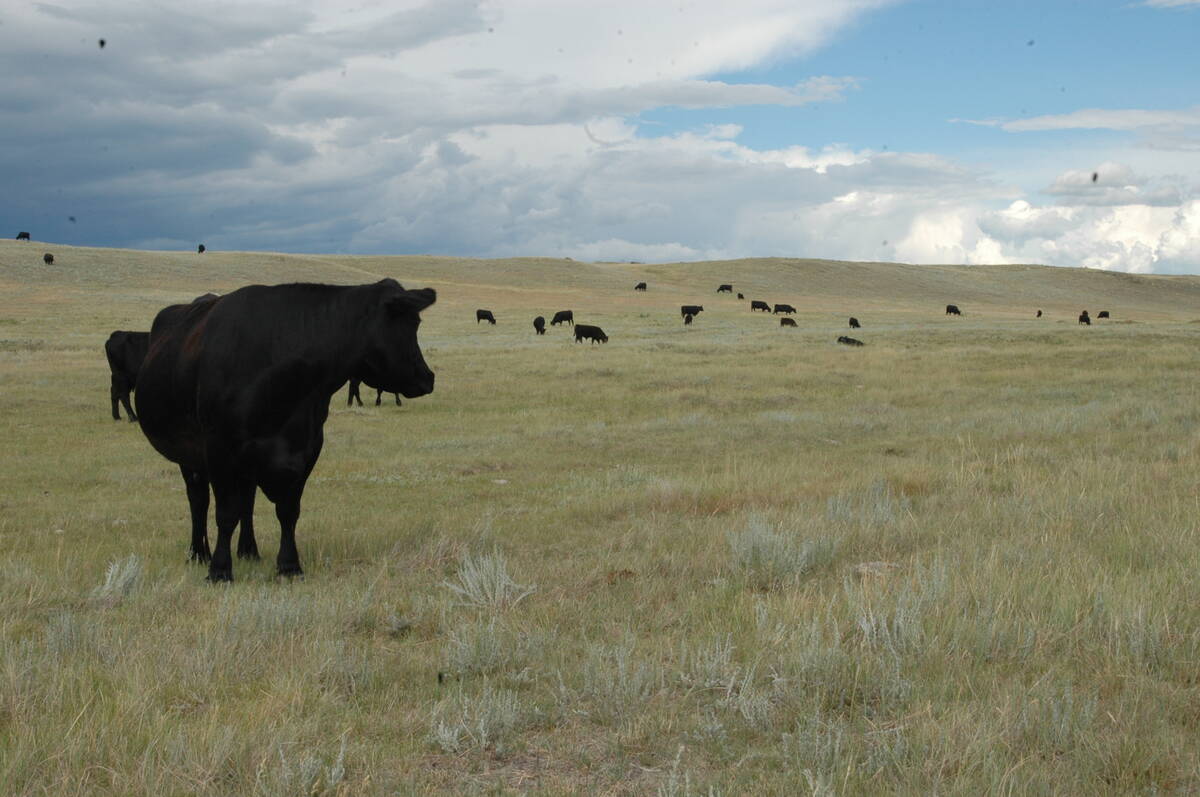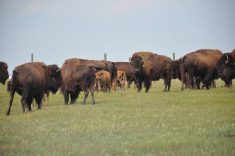CALGARY – Bob Hallett has been keeping weather records for Environment Canada since July 9, 1962, so the recent record snowfall to hit southern Alberta was no surprise.
“You can figure you’ll have snow every third or fourth year before you’re finished harvest,” Hallett said.
The Carstairs farmer said about 20 centimetres of snow fell at his farm on Oct. 1.
For the Calgary region, it was a record breaking snowfall that dumped 15 cm of heavy, wet snow throughout the area. It broke trees, shut off electricity and flattened swaths.
Read Also

Canadian Food Inspection Agency slammed for handling of bovine tuberculosis case
The federal government leans heavily on producers to “take one for the team” and risk their livelihoods without any reassurance of support.
The latest storm comes as the latest in a series of bad weather breaks for many Alberta farmers. In the southern part of the Peace River district in the province’s north, about five percent of harvest is done while the Medicine Hat region in the southeast is almost finished.
In Hallett’s community about 20 percent of the crop is in the bin. However, his family managed to get its crop in by mid-September in the nick of time before rain started the next day.
“I’ve never yet seen a crop where you can consider it to be the best. Some little thing always comes along to take the edge off it, either in quality or yield,” Hallett said.
Ironically, while the harvest season has been extremely wet, the Calgary region received about half the normal amount of precipitation for the summer compared to the five-year average.
Paul Bullock of the Canadian Wheat Board’s weather and crop surveillance division said the latest bout of snow hit the southern tier of the Prairies. Damage estimates won’t be tallied until farmers get their grain off the fields and into elevators to measure quality and bushel weight.
Unlike 1992 when most of the Prairies was devastated by an August snowstorm or 1993 when the majority had wet, sprouted fields, this fall is a split scenario, said Bullock.
About half the prairie harvest was finished by mid-September in southern Manitoba, southeastern Alberta and southwestern Saskatchewan.
Most of the early wheat crop will grade No. 1 and a lot of the barley will likely be suitable for malt, he said. Grain lying in swaths or waiting to be cut loses quality each day.
“If I was designing an experiment to try and get grain to sprout, I can’t think of a better way than to throw wet, heavy snow on it, set it on the ground and then hit it with some nice, warm air,” said Bullock.
Alberta Wheat Pool reports the overall harvest for the province at 47 percent complete compared to the 10-year average of 69 percent complete for this time of year.
The exception is the High Level area in northern Alberta where farmers will probably be finished in another week if dry weather holds.
In central Alberta, rain, frost and snow since mid-September have soaked swaths.
Alberta Agriculture crop specialist Greg Urichuk of Drumheller said standing crops which some people had planned to straight combine have been flattened and there is concern over how to get it off the field.
Sprouting has also been reported throughout an area stretching from Lacombe to Airdrie. Harvest is about half done. The best farmers in the region can hope for in the unharvested crop is No. 3 or feed grade wheat, said crop specialist Ken King at Three Hills.
Since protein levels were already low, the feed value may be questionable.















